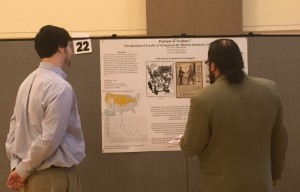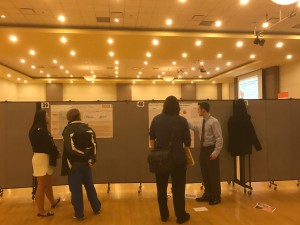With the year coming to a close, many things are going through the minds of our soon-to-be graduates. The big “what now” questions can be answered with many options. Jobs and travel opportunities are just a couple of these. Another is to continue pursuing one’s education. This is the case with Zack Burton, who will graduate from BGSU’s M.A. History program this summer. His focus is on the history of businesses, fast food, and consumer capitalism. Zack has just been accepted into the University of Delaware history PhD program and will be an incoming Hagley Scholar. I was able to ask him some questions about his academic career and the process of applying into a PhD program:
What made you choose the field of history?
Zack: Lots of random, contingent reasons. Mostly great teachers: there was one guy in high school who would lead full trench warfare reenactments and spent an entire class period doing a bad-but-entertaining Napoleon impression. Not to mention the colorful four-person history department at SSU, which included a descendant of Syrian royalty on the run from the Assad regime, a licensed exorcist who taught me that destructive magic is best performed during the waning moon, and a self-proclaimed “Appalachian Buddhist” who lived in the middle of the woods. Everyone studying history has this irresistible storyteller’s glee that makes studying history seem like an unavoidable practice.
So eventually it just got to the point where I felt like studying history was a—pardon the phrase-“no-brainer,” and that whatever I studied I’d be studying history. Study math, and you’re studying the whole history of math. Study dental hygiene, and you…
When did you decide that you would pursue your doctorate?
Zack: I have since learned otherwise, but I entered graduate school thinking that I’d need to study history at the doctorate level and that an MA would get me nowhere. Totally untrue notion, but it kept me motivated enough to apply at BG and continue to pursue that dream. In a lot of ways, it just came off as a sort of big, overwhelming achievement and the challenge of attempting it seduced me immediately.
Where did you apply?
Zack: BGSU for two programs: an MFA in creative writing and a Ph.D. in American Culture Studies. I applied at the history programs at both the University of Oregon and the University of Delaware.
Where were you accepted?
Zack: I was accepted into both the ACS Ph.D. program and the program at UDel. Oregon sent me a very pleasant rejection letter. I still haven’t heard back from the MFA, which should give you a good idea of how difficult it is to apply to programs in more than one field.
What did you need to do in order to apply to these doctoral programs? Were the requirements the same? Were they different?
Zack: Pretty much the same overall. CV/résumé, personal statement/statement of purpose, writing sample, unofficial transcripts, three letters of recommendation. In my broader search, however, I encountered programs requesting one-page CVs and even ones that requested both a personal statement and a statement of purpose, which are different things on little more than molecular level.
What do you plan to do after earning you PhD?
Zack: Despite being warned against it by countless advisers and mentors, I am still interested in pursuing an academic job. Teaching is a wonderful opportunity to have conversations, engage with Young People™, and continue learning long after you graduate. Publications, conferences, and networking all carry a sort of glowing, awe-inspiring significance for me and as I go deeper into the rabbit hole this significance both becomes more attainable and takes on new, more fascinating shapes.
What advice would you give students who are interested in pursuing their PhD?
Zack: “If you have to ask whether or not you want a Ph.D., don’t get one.” It’s a bit black-and-white and I understand that it doesn’t apply to every situation, but it’s the best advice I ever received. Sit down and make a list—if you can find greater than five things you sincerely don’t like about college, you probably shouldn’t condemn yourself to five more years of it.
On the other hand, if you really are considering it, there are a few general rules you can follow. Apply to a school only once you’ve at least Skyped/met with professors there. Don’t let an intimidating GRE score or page count requirements deter you; they’re often ignored in favor of candidates who have done the proper networking and presented a strong writing sample. Finally, if you’re doing mental gymnastics to make yourself seem like a solid candidate, you probably need to apply elsewhere. When applying to Oregon, I tried to make my interest in studying fast food and consumer capitalism mesh with folks who were studying the 19th-century logging industry. Things didn’t work out.
Anything else you would like to add?
Zack: Since starting the MA I’ve repeatedly told people that there’s absolutely nothing to be afraid of in the world of higher education. However, I’ve considered recanting that statement since applying for the Ph.D. By all means, anxiety is an okay thing. You can and should worry a little. But always keep in mind that higher ed, its opportunities, and even adulthood are more silly and exciting than terrifying—like a roller coaster, or like some sort of bumbling, cartoonish monster. Don’t run from them.

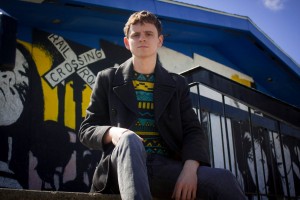
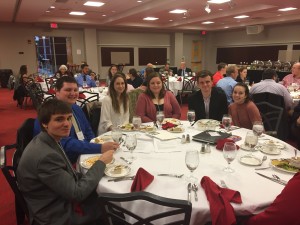

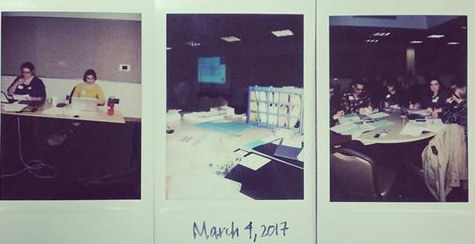
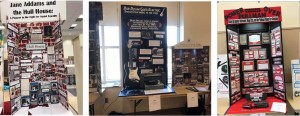




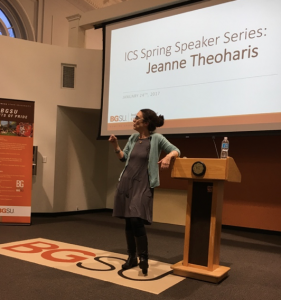 him shoot a ku kluxer. Theoharis argued throughout her talk that the “national fables” constructed about Rosa Parks and the Civil Rights Movement are “dangerous” and comfortable.” Comfortable in that they reduce a lifelong radical activist like Parks to a tired woman on a bus and dangerous because they are used to silence contemporary movements for social justice such as Black Lives Matter. She believes today peple need an example like Rosa Parks, but that we must accurately understand her life. Later in her life, Theoharis states that Rosa Parks described Detroit as the “Northern Promise Land that wasn’t,” illustrating another one of those national fables: that racism was isolated to the South. When finished, Theoharis was awarded a round of applause by the audience and then proceeded to take questions.
him shoot a ku kluxer. Theoharis argued throughout her talk that the “national fables” constructed about Rosa Parks and the Civil Rights Movement are “dangerous” and comfortable.” Comfortable in that they reduce a lifelong radical activist like Parks to a tired woman on a bus and dangerous because they are used to silence contemporary movements for social justice such as Black Lives Matter. She believes today peple need an example like Rosa Parks, but that we must accurately understand her life. Later in her life, Theoharis states that Rosa Parks described Detroit as the “Northern Promise Land that wasn’t,” illustrating another one of those national fables: that racism was isolated to the South. When finished, Theoharis was awarded a round of applause by the audience and then proceeded to take questions.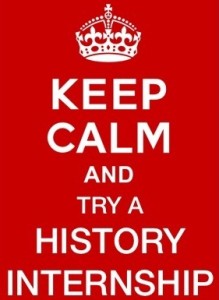 discouraged when my applications for all kinds of positions went nowhere. To be honest, I had not taken the time to research job possibilities, to go to job fairs, or even to talk to working people about possible opportunities out there. My job applications were like shots in the dark, we might say. But just when I thought I’d never find anything better than working at the local soda fountain (I served ice cream at Rogers’ Drug Store, now Tubby’s Tavern in downtown BG), I got a call back – from none other than the Internal Revenue Service. The IRS was hiring, and the human resources office in Toledo liked my resume. My meagre savings were dwindling and I figured I didn’t have much to lose; I said “yes” to an interview, and then “yes” to a job in the collections department. I was thrilled at first, because this proved that humanities majors can get jobs, but whether I would like it or not was another matter.
discouraged when my applications for all kinds of positions went nowhere. To be honest, I had not taken the time to research job possibilities, to go to job fairs, or even to talk to working people about possible opportunities out there. My job applications were like shots in the dark, we might say. But just when I thought I’d never find anything better than working at the local soda fountain (I served ice cream at Rogers’ Drug Store, now Tubby’s Tavern in downtown BG), I got a call back – from none other than the Internal Revenue Service. The IRS was hiring, and the human resources office in Toledo liked my resume. My meagre savings were dwindling and I figured I didn’t have much to lose; I said “yes” to an interview, and then “yes” to a job in the collections department. I was thrilled at first, because this proved that humanities majors can get jobs, but whether I would like it or not was another matter.